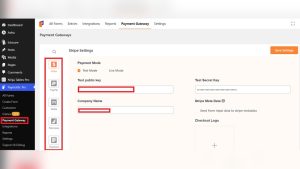Are you ready to take your Python skills to the next level? Imagine showcasing your very own web app to the world, accessible at any time, from anywhere.
Whether you’re a seasoned developer or just dipping your toes into the world of web development, hosting your Python web app can be an exhilarating experience. But where do you start? The process might seem daunting, but fear not—it’s more straightforward than you might think.
By the end of this article, you’ll have a clear roadmap to get your Python web app live and running smoothly. Unlock the potential of your code and let it shine on the global stage. Your journey to hosting your Python web app begins now, and we’re here to guide you every step of the way.

Credit: anvil.works
Choosing The Right Hosting Platform
Shared hosting is like sharing a pizza with friends. It is cheaper. But, you share resources with others. This can make your app slow. Dedicated servers are like having your own pizza. They are faster and more secure. But, they cost more money. Choosing depends on your needs and budget.
Cloud hosting is like storing files in a big cloud. It offers flexibility. You can add more space if your app grows. Many companies offer cloud hosting. Amazon Web Services (AWS) and Google Cloud are popular. They provide different features and pricing. Choose a provider that fits your app’s needs.
Costs vary with each hosting type. Shared hosting is usually the cheapest. Dedicated servers are the most expensive. Cloud hosting is flexible, but costs can add up. Think about what your app needs. Consider both costs and benefits. Choose a plan that offers the best value for your app.
Setting Up Your Development Environment
Start with a text editor like VS Code or Sublime Text. These tools help you write code easily. Install Python on your computer. It lets you run your code locally. Use a web browser to test your app. Google Chrome or Firefox are good choices. Check for updates in your tools. This keeps them working well.
Using Git is very important. It helps keep track of changes in your code. Create a GitHub account for storing code online. This makes it easy to share. Use Git commands like commit and push. These commands save your work. Collaborate with others by using pull requests. It helps get feedback.
A virtual environment keeps your project organized. It separates your project’s dependencies. Use the command `python -m venv myenv` to create one. Activate the environment before coding. It helps in managing packages. Install packages using pip inside the environment. This keeps them isolated. Use `deactivate` to exit the environment.
Deploying Your Python Web App
Docker is a tool that helps run apps in containers. Containers are like small boxes. They hold everything your app needs. This makes moving apps easy. Docker makes sure your app works the same everywhere. You can share your app with others. Just give them the container. No more “it works on my machine” problems.
Continuous Integration, or CI, checks your code often. It finds mistakes early. You write code, then CI tests it right away. This keeps your app healthy. Every change gets tested. So, fewer bugs make it to users. Tools like Jenkins and Travis CI help. They run tests automatically. This saves time and effort.
Automation makes deployment fast and easy. Scripts do the hard work. You write them once. Then, they run by themselves. This means fewer errors. Your app goes live quickly. Tools like GitHub Actions help a lot. They automate steps for you. This keeps your app up-to-date. No need to do tasks manually.

Credit: medium.com
Configuring Your Web Server
The right web server is key. Nginx and Apache are popular choices. Nginx is fast and uses less memory. Apache is flexible and has many features. Consider your app needs. Choose based on speed or flexibility. Both have strong communities. Help is always available.
Nginx is great for serving static files. It needs a simple config. Apache offers many modules. They add functions like URL rewriting. Installation is easy. Follow step-by-step guides online. Both servers run on Linux and Windows. Remember to test after setup.
Static content includes images and HTML files. Nginx handles them well. Dynamic content comes from scripts. Use Python for dynamic data. WSGI helps link Python apps with the server. Both Nginx and Apache support WSGI. This makes running Python apps simple.
Ensuring Security And Performance
Using HTTPS keeps data safe. It encrypts information between users and your site. This stops bad guys from stealing data. Always use HTTPS for every page. Get a certificate from a trusted provider. It’s easy to set up. Your users will feel safer too.
Fast websites are happy websites. Use a content delivery network (CDN). This helps load pages quickly. Minimize your code size. Remove extra spaces and lines. Compress images to make them smaller. Always check your site’s speed. Use tools like Google PageSpeed.
Keep an eye on your app with monitoring tools. They alert you to problems fast. Log all important actions. This helps find issues quickly. Use tools like New Relic or Splunk. They keep your app running smoothly. Logs show you what went wrong. Fix problems before users notice.
Scalability Considerations
Load balancing is important for web apps. It helps manage traffic. It stops servers from getting too busy. Round-robin is a simple method. It shares the load evenly. Least connections checks which server is least busy. IP hash connects users to the same server. This keeps user sessions smooth.
Databases must grow with your app. Horizontal scaling adds more machines. Vertical scaling adds more power to one machine. Sharding splits data across servers. This helps speed up queries. Replication copies data to more servers. This keeps data safe. Caching stores data temporarily. It speeds up data access.
Traffic spikes can crash your app. Use auto-scaling to add resources as needed. CDNs distribute content. They deliver data fast. Rate limiting controls traffic. It stops overload. Monitoring tools track usage. They alert you to issues. Backup plans keep data safe. They restore service fast.
Troubleshooting Common Issues
Deployment errors can be tricky. Check your logs for clues. Logs often tell you what went wrong. Ensure your files are in the right place. Double-check file paths. Also, confirm that dependencies are installed. Missing libraries can cause errors. Make sure your environment variables are set. Wrong values can lead to issues.
Server settings must be correct. Check your server’s port. It should match your app’s settings. Review your firewall rules. Open necessary ports. Ensure the server has enough resources. Low memory can cause problems. Double-check permissions. The server needs access to files. Wrong permissions can stop apps from working.
Identify slow parts of your app. Use tools to find these areas. Optimize your code. Clean and efficient code runs faster. Use caching to speed up responses. Cached data loads quicker. Check your database queries. Slow queries can slow down the app. Monitor server load. High load can affect performance.

Credit: learn.microsoft.com
Frequently Asked Questions
How To Host A Python Web Application Online?
Host a Python web app by choosing a cloud provider like AWS or Heroku. Set up a virtual environment, install dependencies, and deploy your app using Git. Configure necessary settings, domains, and security measures. Ensure the server supports Python and your framework, such as Django or Flask.
How To Host A Python Webserver?
Install Python and Flask. Create an app. py file with your web server code. Run the server using `python app. py`. Ensure your server is accessible by configuring firewall settings. Use a platform like Heroku or AWS for online hosting.
Can I Build A Web App With Python?
Yes, you can build a web app with Python. Frameworks like Django and Flask make the process easier. Python offers powerful libraries and tools for web development. It is popular for building scalable and efficient web applications. Many developers choose Python for its simplicity and versatility.
Where Can I Host My Python App?
You can host your Python app on platforms like Heroku, AWS, Google Cloud, or DigitalOcean. These services offer scalability and flexibility. Consider using PythonAnywhere for smaller projects. Choose based on your app’s requirements and budget.
Conclusion
Hosting a Python web app is quite straightforward. Choose a reliable hosting service. Set up your environment correctly. Deploy your app with care. Keep your code clean and efficient. Regularly update and maintain your app. Monitor performance and security. Ensure your app runs smoothly for users.
Remember, practice makes perfect. The more you host, the better you get. Python offers flexibility, making web hosting easier. With dedication, your web app will succeed. Always aim for quality and user satisfaction. Embrace challenges and learn from them. Your Python web app journey starts today.



